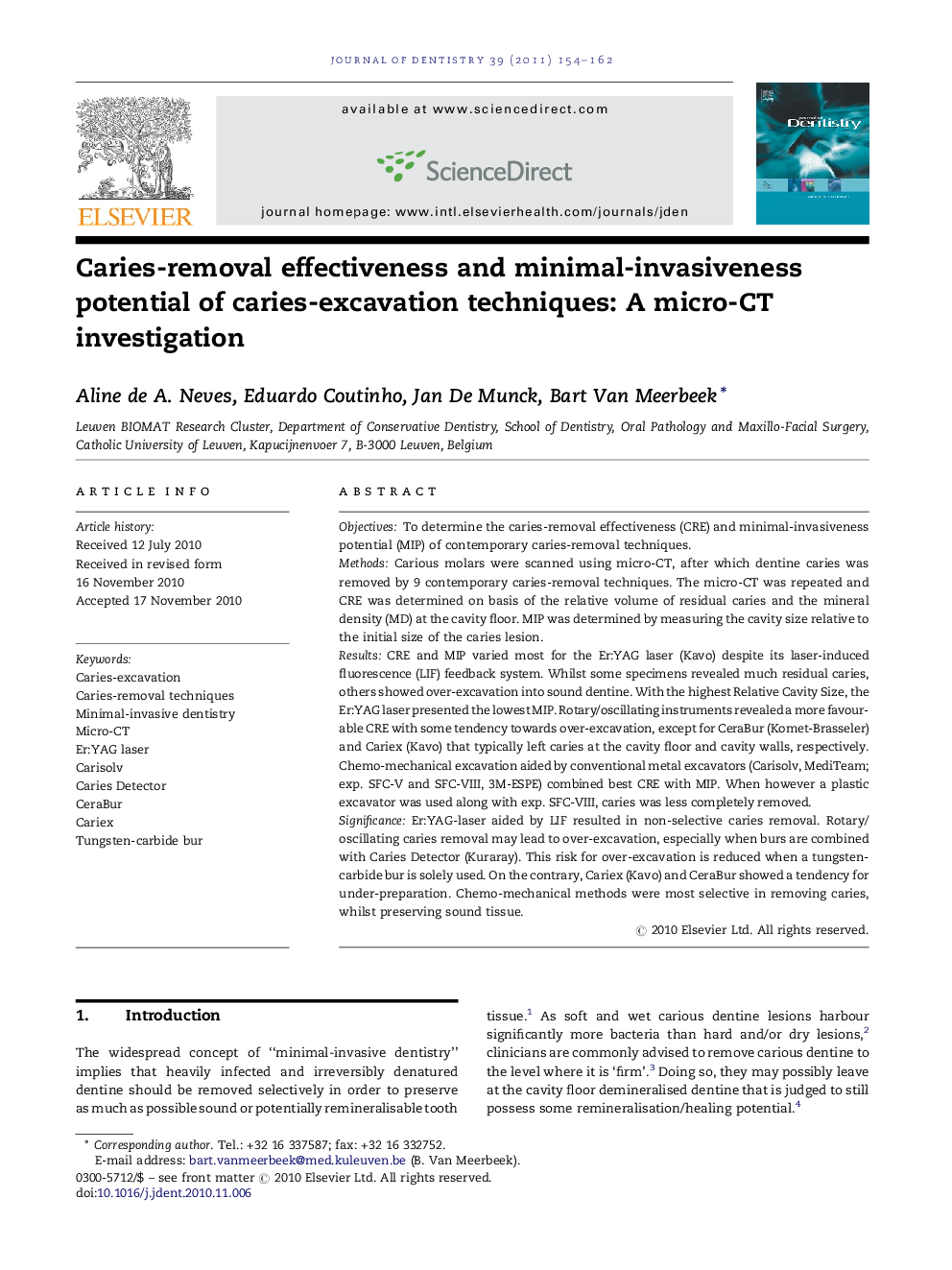| Article ID | Journal | Published Year | Pages | File Type |
|---|---|---|---|---|
| 3146318 | Journal of Dentistry | 2011 | 9 Pages |
ObjectivesTo determine the caries-removal effectiveness (CRE) and minimal-invasiveness potential (MIP) of contemporary caries-removal techniques.MethodsCarious molars were scanned using micro-CT, after which dentine caries was removed by 9 contemporary caries-removal techniques. The micro-CT was repeated and CRE was determined on basis of the relative volume of residual caries and the mineral density (MD) at the cavity floor. MIP was determined by measuring the cavity size relative to the initial size of the caries lesion.ResultsCRE and MIP varied most for the Er:YAG laser (Kavo) despite its laser-induced fluorescence (LIF) feedback system. Whilst some specimens revealed much residual caries, others showed over-excavation into sound dentine. With the highest Relative Cavity Size, the Er:YAG laser presented the lowest MIP. Rotary/oscillating instruments revealed a more favourable CRE with some tendency towards over-excavation, except for CeraBur (Komet-Brasseler) and Cariex (Kavo) that typically left caries at the cavity floor and cavity walls, respectively. Chemo-mechanical excavation aided by conventional metal excavators (Carisolv, MediTeam; exp. SFC-V and SFC-VIII, 3M-ESPE) combined best CRE with MIP. When however a plastic excavator was used along with exp. SFC-VIII, caries was less completely removed.SignificanceEr:YAG-laser aided by LIF resulted in non-selective caries removal. Rotary/oscillating caries removal may lead to over-excavation, especially when burs are combined with Caries Detector (Kuraray). This risk for over-excavation is reduced when a tungsten-carbide bur is solely used. On the contrary, Cariex (Kavo) and CeraBur showed a tendency for under-preparation. Chemo-mechanical methods were most selective in removing caries, whilst preserving sound tissue.
